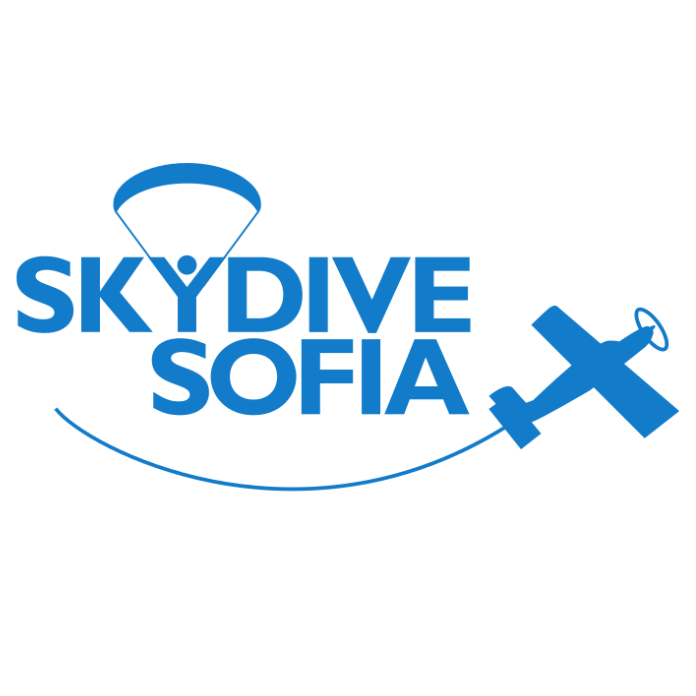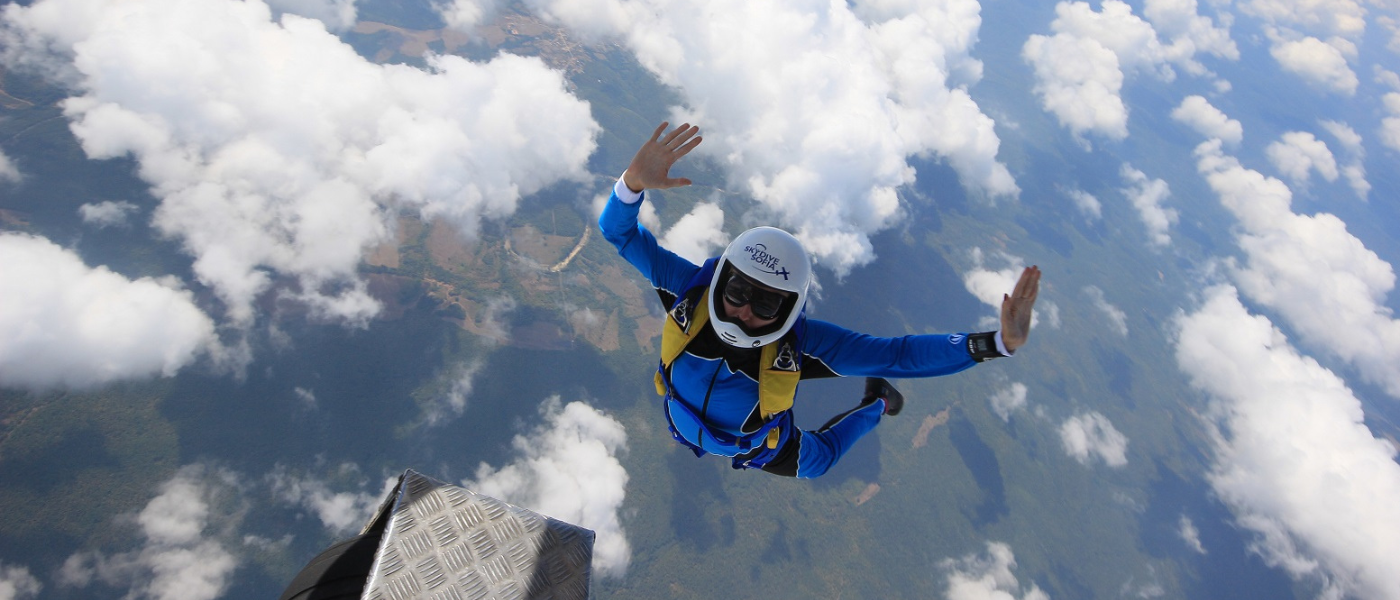Branislav Brankov
If you’re drawn to free flight and interested in skydiving, wingsuiting, or base jumping but aren’t sure where to start—the path to the sky begins on the ground. AFF (or Accelerated Free Fall) is the most modern method of skydiving training, and is performed only by highly experienced instructors certified by the United States Parachute Association. www.uspa.org. In Bulgaria, this course is conducted by the only USPA licensed team – Skydive Sofia.
AFF is an intensive course consisting of ground training and 7 jumps of at least 3,500 meters, during which you will learn to control your body in the air and deal with emergency situations that may arise during a jump. All 7 jumps will be filmed by your instructors, and the time you are on the ground will be spent analyzing the previous jump and ground preparation for the next one.
The first thing you will learn during the course is that our main goal as skydivers is to have fun, but safely and responsibly towards ourselves and others in the air. It always starts with preparing the parachute and how to pilot the canopy, as this is the most dangerous part of a skydiver’s job. You will gain knowledge about the construction of modern parachute systems and how they work. You will learn about the parachute backpack device and how to check yourself before a jump whether your parachute system is in working order. You will examine in detail complete and partial parachute system failures and how to respond to the various problems that may arise in the air. Modern parachute systems, the kind everyone jumps with during the course, fail once every few thousand jumps (or don’t fail at all if you take very good care of them). However, you will be well prepared on how to react in the event of a possible refusal.
Ground Prep
In practical ground training, you will practice your reaction to all types of failures and emergency situations. You will put on a skydiving rig, then they will make you close your eyes and pretend to open your parachute… …you throw out the pilot chute, count “one thousand and one, one thousand and two … one thousand and five”, you open your eyes, look up at your parachute and see that your instructor is holding a picture of a very tangled canopy that is completely uncontrollable and impossible to land. You react almost instinctively, grabbing the handles of the cut-away and reserve parachute. You pull the cut-away – your main parachute separates from you and you start free falling again – you also pull the reserve parachute handle and the white wing appears above you and fills with air, which will land you safely. The exercise seems very simple, but it helps build your ability to react almost instantly to a real situation in the air.
“What if the reserve canopy doesn’t open?”
The reserve canopies are being packed only by specialists – riggers, who are specially educated how to do it. When packing a reserve parachute, the rigger seals it with his initials and is criminally liable if it does not work. Every reserve parachute, nevermind if it has not been used, must be checked and repacked once a year. With modern parachute systems, failures are reduced to practically zero. In cases where a skydiver dies, it is usually due to improper behavior or error on the part of the skydiver, rather than a system failure.
Once you have completed the ground training, it’s time for the next stage – how and where above the dropzone to begin your landing approach and how to execute it safely. They will also teach you how to deal with less than ideal landings. Next comes freefall training and what your behavior should be around the plane when it is on the ground and during flight. While you learn how to hold your body in free fall, you will train the specific body position and the so-called Circle of Awareness – this is the ability during free fall to analyze and assess the situation and react correctly to what is happening. You will practice all the exercises planned for your first jump multiple times, so that in the air, you won’t have to think about them—you’ll simply perform them instinctively. You will also be prepared on how to safely approach the aircraft and how to exit it properly, as well as how to respond to accidents occurring at different heights above the ground. This concludes your ground school preparation, which lasted about half a day.
Sky
Now comes the practical part of the course – the jumps! If the weather conditions are with you (as a student you will only jump in very good conditions that you can handle) and depending on your free time, you can complete the 7 jumps planned for the course within 3 days. Before each jump, you will do a complete check of your parachute and the rest of your equipment – altimeter, helmet, goggles. You will check your parachute equipment once more before boarding the plane and once more before the jump itself. For your safety and to get the most out of the course, during the first 3-4 jumps, the instructors will hold you by the harness until you master the basic stable position for falling. Additionally, for the first few landings, you will be fully guided by radio. If you demonstrate good skills, by your third or fourth jump, they may stop guiding you via radio. Moreover, the instructor may teach you how to turn in freefall and fly close to you without physically holding you, observing how you handle the tasks assigned. We are all different and learn at different speeds, so they may let you go on the second jump, or they may still hold you until the fifth jump. It all depends on how well you understand the material and how effectively you perform the tasks. The goal of the course is to be stable in free fall, control your direction (i.e. turn), know how to glide forward, and how to regain stability if for some reason you flip over onto your back. In fact, you will make the last 2 jumps of the course with a so-called unstable exit from the plane, after which your first task is to stabilize yourself and show all the skills you have learned so far.
What happens after?
Jump number 8, of coarse! Your first completely independent skydiving jump. The first jump, where they already have complete trust in you, that you will be able to have fun in the air on your own, while at the same time being responsible enough for your life. This will feel like the longest jump you’ve ever done, and you’ll be advised not to do any maneuvers, but to just enjoy it, free-falling.
The first “real” jump may be enough for you. But if you dream of serious growth—becoming an instructor, flying in large formations with others, mastering wingsuit flying, or perfecting your landings—you have a long journey ahead. During the course you have only accumulated about 3-4 minutes of pure freefall time, and maybe 30 minutes under a canopy. Whatever development you aspire to as a skydiver, your first step is to obtain the so-called А-license, which gives you the right to jump with other licensed skydivers. To take the A-license exam, you must have a minimum of 25 parachute jumps, during which you have accumulated at least 5 minutes of free fall. You must also successfully pass a written test and demonstrate in the air that you can approach another skydiver precisely enough and glide effectively away from them to open your parachutes at a safe distance from each other.

